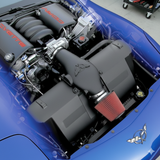How can you install performance chips for your car?
Installing performance chips or tuners in your car can significantly boost its performance and efficiency. With technological advancements in the automotive industry, it is now easier to improve your vehicle’s overall performance with the help of performance chips. However, the installation process can be tricky for a beginner. Here are some tips on how to install performance chips for your car.
Firstly, it is important to note that unless you are dealing with something quite old, performance chips are no longer actual chips. In-line tuners are now used, which are easy to install. To begin the installation process, first, disconnect the cable or cables leading to the car’s Powertrain Control Module (PCM). The PCM is an electronic control module that controls various components of the engine. Next, connect the tuner into the PCMK and plug the original harness into the other side of the tuner. This will provide an uninterrupted connection between the PCM and the car's electronic components.
It is crucial to ensure that you have the right performance chip for your car. Each tuner or chip is designed to work with specific models and types of vehicles. Research the different types of performance chips that are compatible with your car to find the best option for your specific vehicle. Performance chips can increase horsepower, torque, and fuel economy while also providing other performance enhancements like better throttle response, improved transmission shifting, and more.
Once you have found the right tuner for your car, you need to find the OBD2 communication port, which is typically located under the dash. Most performance chips connect to this port, allowing the chip to communicate with the car’s engine control unit. You can usually find this port near the driver's side kick panel or under the steering column. It is usually identified by a diagnostic connector with a plastic cap. Once you locate the port, plug in the tuner's connector, and follow the on-screen prompts to start the installation process.
When installing a performance chip or tuner, always ensure that your car's battery is fully charged before starting. This will prevent any electrical issues that may occur during the installation process. You should also take time to read the instructions carefully and follow them accordingly. This will ensure that you install the chip correctly and safely.
Finally, once you have completed the installation process, test the performance chip's functionality to ensure that it works as intended. Start the car and take it for a spin to check the horsepower, torque, and overall performance of the vehicle. It is important to ensure that the car's electronic systems are working properly, and there are no warning lights or issues with the car's transmission or other components.
In conclusion, installing a performance chip can significantly improve your car's overall performance, but it is essential to do so correctly. Follow these tips to install the chip safely and effectively, ensuring that your vehicle runs at peak performance levels. Take your time to research and find the best tuner for your car to enjoy maximum benefits and take your driving experience to the next level.
EXPLORE POPULAR ARTICLES
-
Uncorking the LS1: The Essential Air Intake Upgrade for Your 1997-2000 C5 Corvette
Nov 25th 2025The C5 Chevrolet Corvette, produced from 1997 to 2004, marked a significant leap forward for the ico
-
2011–2018 Dodge Challenger 6.4L
Oct 8th 2025Unleashing the Beast: The History of the 2011–2018 Dodge Challenger 6.4L and How Air Intake Upgrades
-
Unlocking Performance: Air Intakes and Stage 1 Performance Chips for Chevy Camaro
Oct 22nd 2024The Chevy Camaro is a legendary muscle car known for its aggressive styling and powerful engines. Ho




